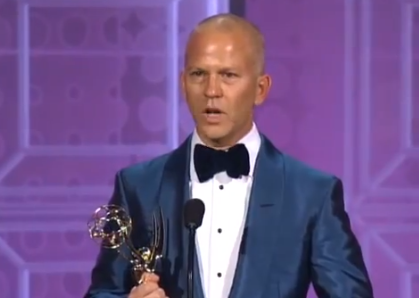
News
Cambridge Residents Slam Council Proposal to Delay Bike Lane Construction

News
‘Gender-Affirming Slay Fest’: Harvard College QSA Hosts Annual Queer Prom

News
‘Not Being Nerds’: Harvard Students Dance to Tinashe at Yardfest

News
Wrongful Death Trial Against CAMHS Employee Over 2015 Student Suicide To Begin Tuesday

News
Cornel West, Harvard Affiliates Call for University to Divest from ‘Israeli Apartheid’ at Rally
Televisionary: On Ryan Murphy

Oh, Ryan Murphy. You try so hard.
Murphy has had quite an interesting career trajectory—he’s the creator of a varied assortment of shows including “Nip/Tuck,” “Glee,” “American Horror Story,” and “The New Normal.” Also, he’s crazy. Besides the not-so-dearly departed “The New Normal,” Murphy’s shows are notable for their off the wall, crazy plot developments, outrageous characters, and nonsensical story arcs.
Take “Glee” for instance. Poor, poor, “Glee.” I remember being in high school when the promise of “Glee” was so exciting—a musical TV show with kids singing everything from Lady Gaga to "Cabaret!" It’s funny to look back now and see the naiveté. The schtick was endearing for maybe a season—okay, Lea Michele is talented; Matthew Morrison plays the worst teacher alive who nevertheless means well; Jane Lynch is quite funny—but it soon devolved into a mess of faux-"KidzBop" pageantry, glitter, and feelings.
This leads us to what is arguably the most commercially and critically successful cog in the Ryan Murphy machine, “American Horror Story” (or “Jessica Lange is Fabulous and There Are Also Monsters I Guess”). Season one, retroactively titled “Murder House,” was an abject disaster and, to me, indicative of the problems that still plague this improved but still confounding show. “Murder House” had no sense of self—it fell victim to Murphy’s “throw everything on the wall and hope something sticks” approach to television.
However, there was one bright spot in this muddy mess—the queen of the Southern drawl (her Blanche DuBois is legendary), Jessica Lange. Playing Constance, the neighbor from hell, Lange gave pedigree and critical clout to a floundering freshman show. And Murphy is particularly lucky she did, because her Emmy and Golden Globe-winning turn led the show to be picked up for a second, vastly improved season, entitled “Asylum.” This was the show “AHS” had been striving to be since the beginning—moody and atmospheric, with hearty injections of camp (“The Name Game” anyone?) and legitimate frights.
Now we are well into the third season, called “Coven,” and I’m worried. The show seems to be back to its old tricks, throwing plot points around nonsensically and hoping something is shocking enough to cause dramatic tension. The shock-and-awe approach, so ingrained in the sense of place and time of “Asylum,” is proving to be a downfall to “Coven.” Just in the last episode alone, plots involving religious fanaticism, incest, and bestiality were all introduced, while a key character was killed off. And the narrative is… what, exactly? The conflict between Lange and Angela Bassett’s characters? It’s remarkable that three episodes in I really can’t tell you what the show is about. I can pick out lots of insane moments, but nothing really tied to the forward action of the plot (something that “Asylum” excelled at)—just moments.
Murphy’s rather eclectic group of TV shows is perhaps indicative of the type of person he is. So here’s hoping that the erratic creator and his team can figure out what story they’re trying to tell—and if it involves Lange and Patti LuPone having an angry, belty duet together, all will be forgiven.
Want to keep up with breaking news? Subscribe to our email newsletter.
